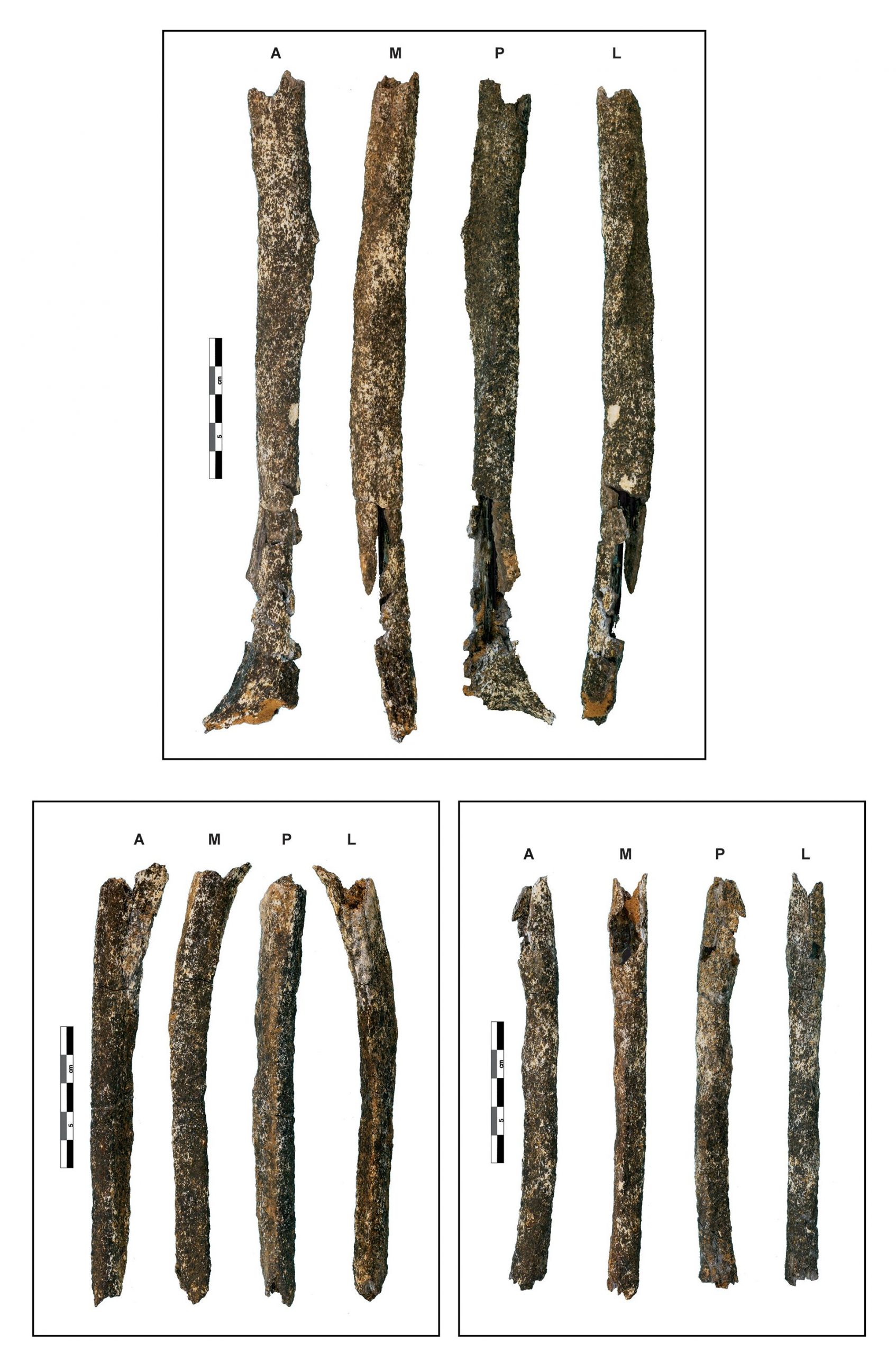Our 200,000-Year-Old Ancestors: Neanderthal Bones in Northern France
We often make new discoveries about our ancient ancestors and how they may have behaved, and we sometimes find the evidence right in their bones. For instance, researchers recently described how the jaw and teeth of a Neanderthal might suggest that they created their own toothpicks out of sticks or used small blades of grass to remove food from their teeth and relieve the pain from gum disease.
At a rescue excavation of an open-air prehistoric site, Tourville-la-Rivière in the Seine Valley of Normandy in northern France, the authors of a study recently published in PLOS ONE were in for a surprise – the discovery of three long human arm bones. The authors detail the unearthing, description, and analysis of these three partially crushed bones: a left humerus, radius, and ulna from the same upper left limb (image above).
The authors used a spectroscopic technique (electron spin resonance, or ESR) and a radiometric dating technique (Uranium-thorium dating, or U-series dating) to determine an approximate age for the Tourville human remains. The authors then scanned the bones in an X-ray and processed them on the computer (X-ray Computerized tomography, or CT) to generate a 3D cross-sectional image of the bones, allowing the authors to examine their shapes and characterize them within the Neanderthal lineage.
As a result of the analyses, the authors estimate the bones most likely belonged to a single Neanderthal adult or older adolescent from 200,000 years ago. This discovery may be the first example of the Neanderthal lineage in northwestern Europe, and the authors suggest that it may provide insight into the relationship of the Tourville remains to other human fossils from ~781,000-126,000 years ago, a period known as the Middle Pleistocene era.
The authors also describe how the shape and other features of these bones are more similar to Neanderthals than to humans. The longest part of the humerus that connects to the deltoid muscle is closer to the length of a Neanderthal bone than a modern human bone. In addition, the attachment site where the radius and ulna meet is similar in structure to Neanderthal bones. The image below displays these similarities, showing the Tourville human remains to the left of well-preserved female Neanderthal bones.
The researchers also noted that the connective tissue between the tendon and the humerus featured a rather unusual long ridge or crest—this formation is often found in older modern humans, and is located at a section of the bone connected to the deltoid, or back shoulder muscle. Since this muscle allows for the rotation and lifting of the arm, this crest may be the result of a repetitive throwing motion. The researchers suggest that this throwing motion could be connected to activities like spear throwing.
The Tourville fossils may be the oldest found in France during a rescue excavation, and may provide new material for a limited sample of fossils from northwestern Europe. Previously discovered fossil samples from the Middle Pleistocene era mainly consist of skulls and teeth, so the discovery of three arm bones may reveal an unusual shape in the connective tissue that may provide new evidence for how Neanderthals may have behaved. While the authors concede that the precise cause of this abnormality in the connective tissue is unclear, it poses an interesting question for further research on how Neanderthals behaved and whether this change may have impacted their survival as a species.
Citations:
Antoine P, Lautridou JP, Sommé J, Auguste P, Auffret JP, et al. (1998) Les formations quaternaires de la France du Nord-Ouest: Limites et corrélations. Quaternaire 9: 227–241. doi: 10.3406/quate.1998.1605
Lozano M, Subirà ME, Aparicio J, Lorenzo C, Gómez-Merino G (2013) Toothpicking and Periodontal Disease in a Neanderthal Specimen from Cova Foradà Site (Valencia, Spain). PLoS ONE 8(10): e76852. doi:10.1371/journal.pone.0076852
Faivre J-P, Maureille B, Bayle P, Crevecoeur I, Duval M, et al. (2014) Middle Pleistocene Human Remains from Tourville-la-Rivière (Normandy, France) and Their Archaeological Context. PLoS ONE 9(10): e104111. doi:10.1371/journal.pone.0104111
Images: All images are from the article.


